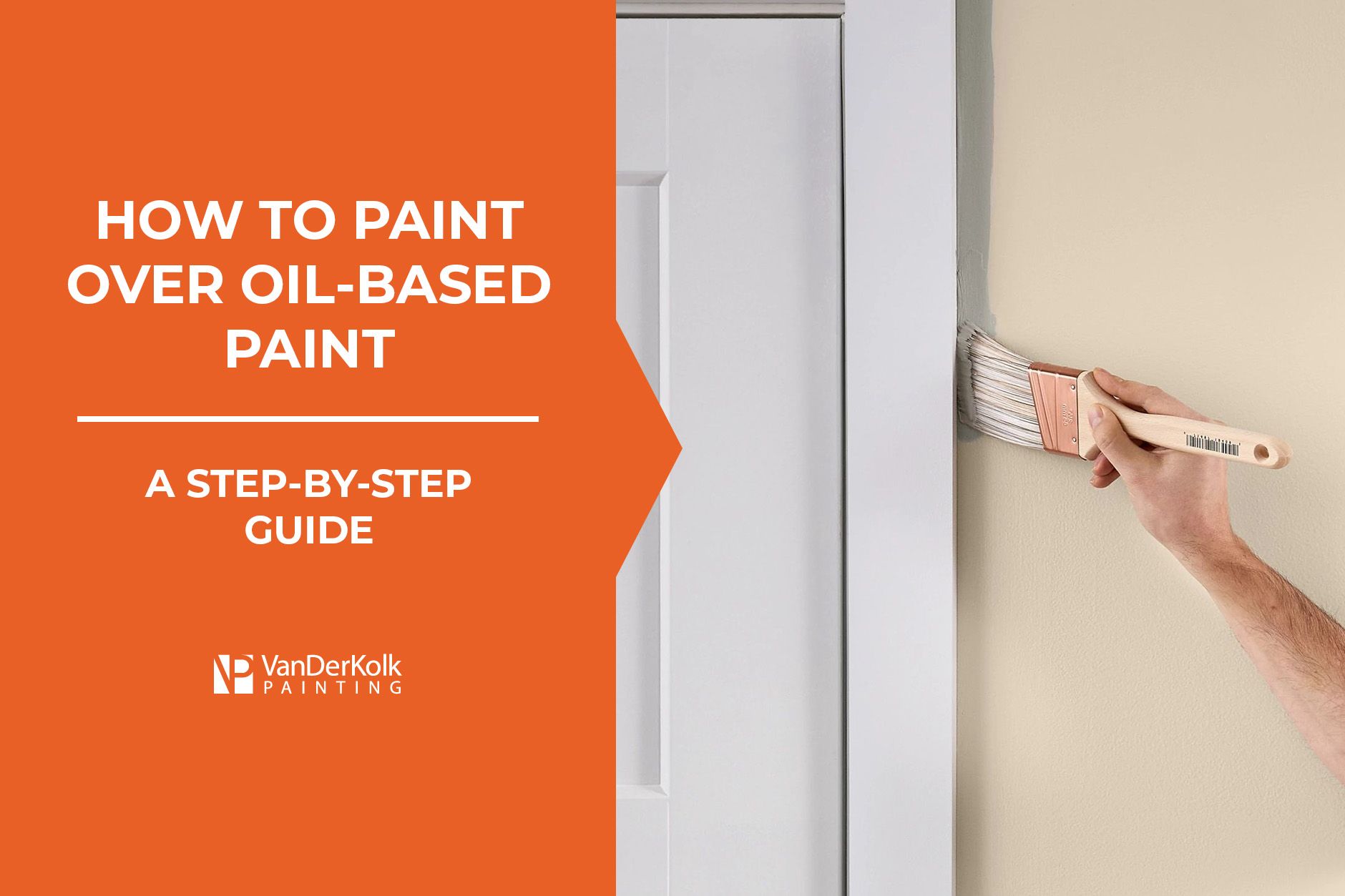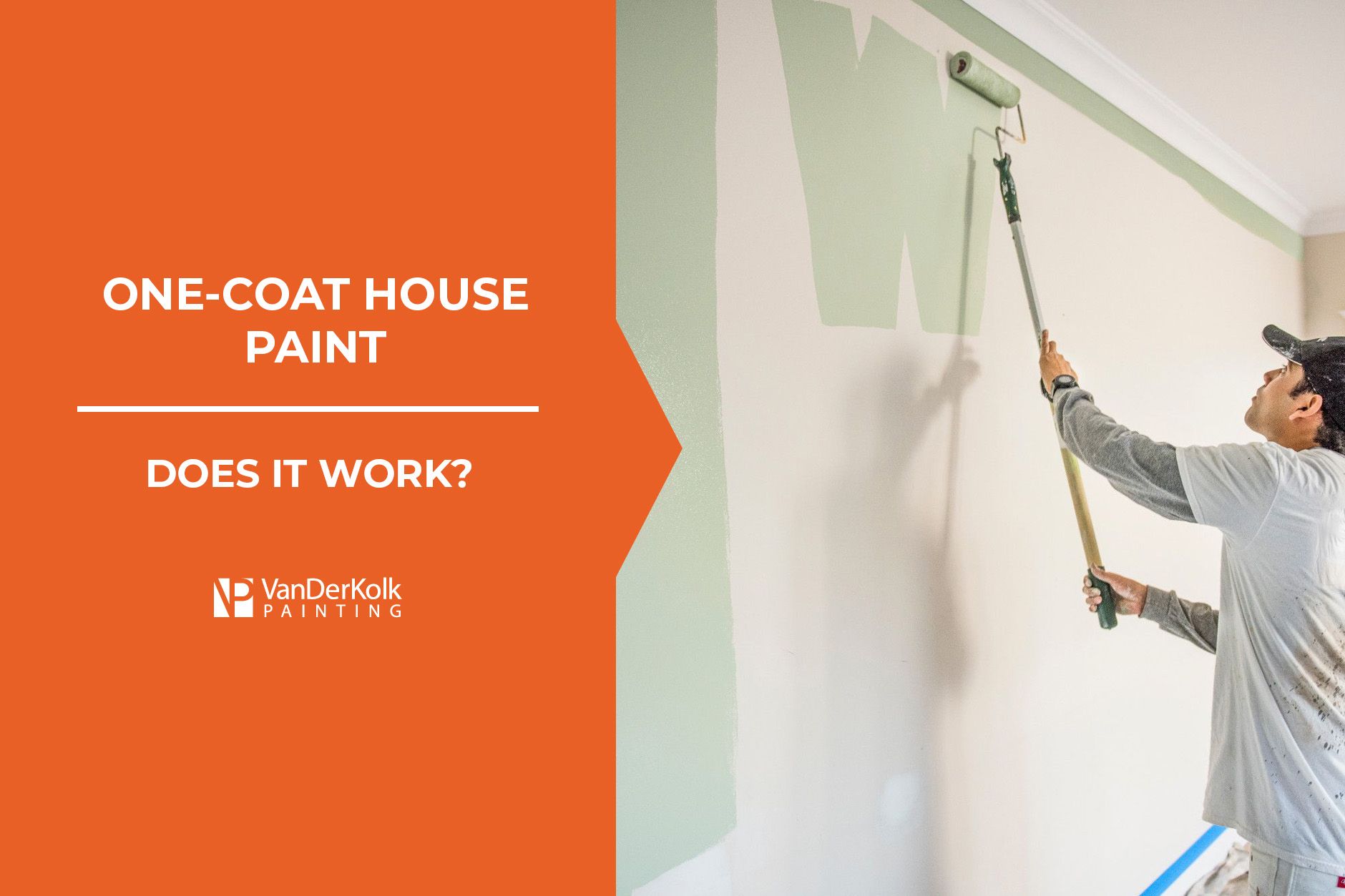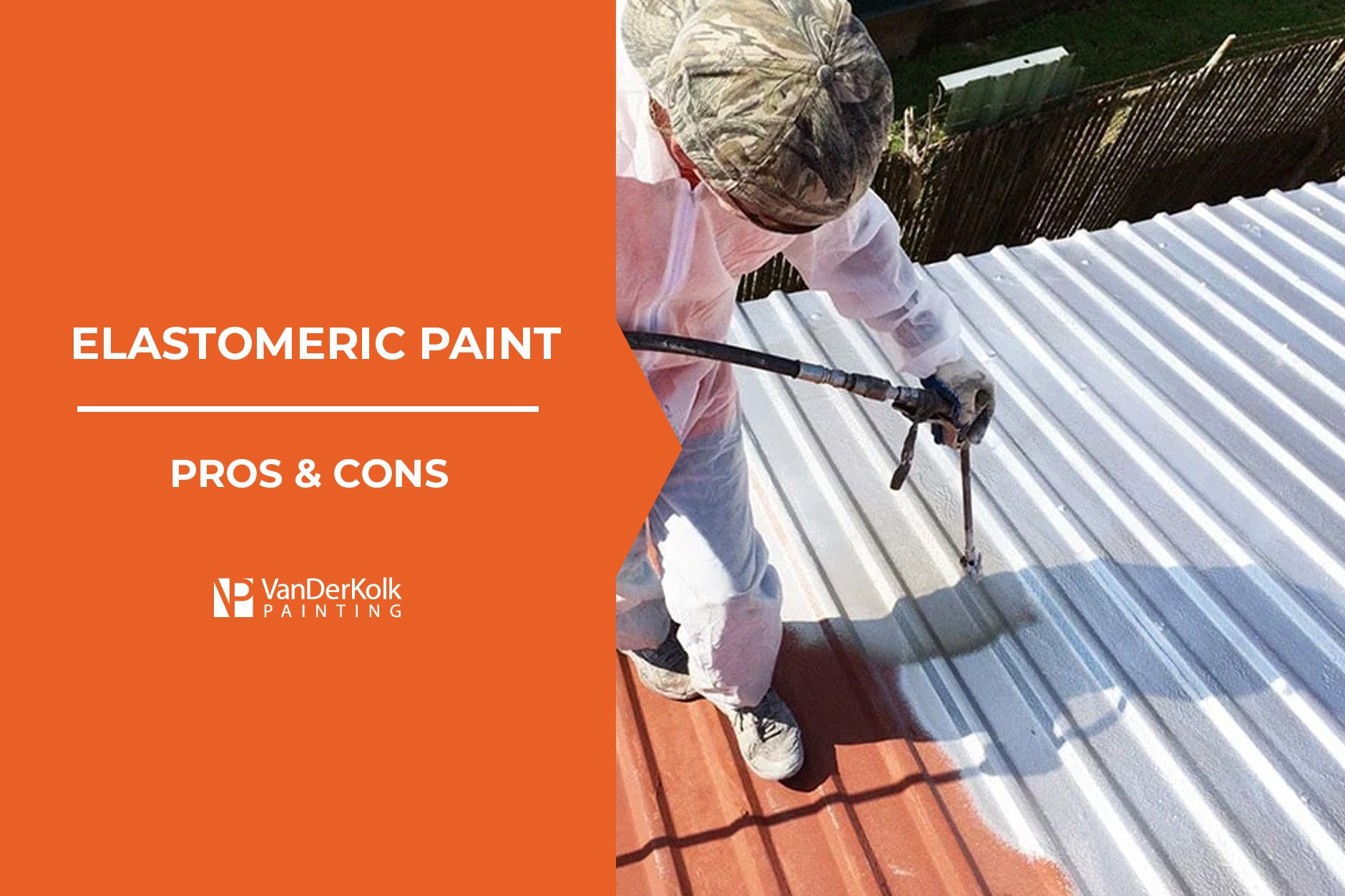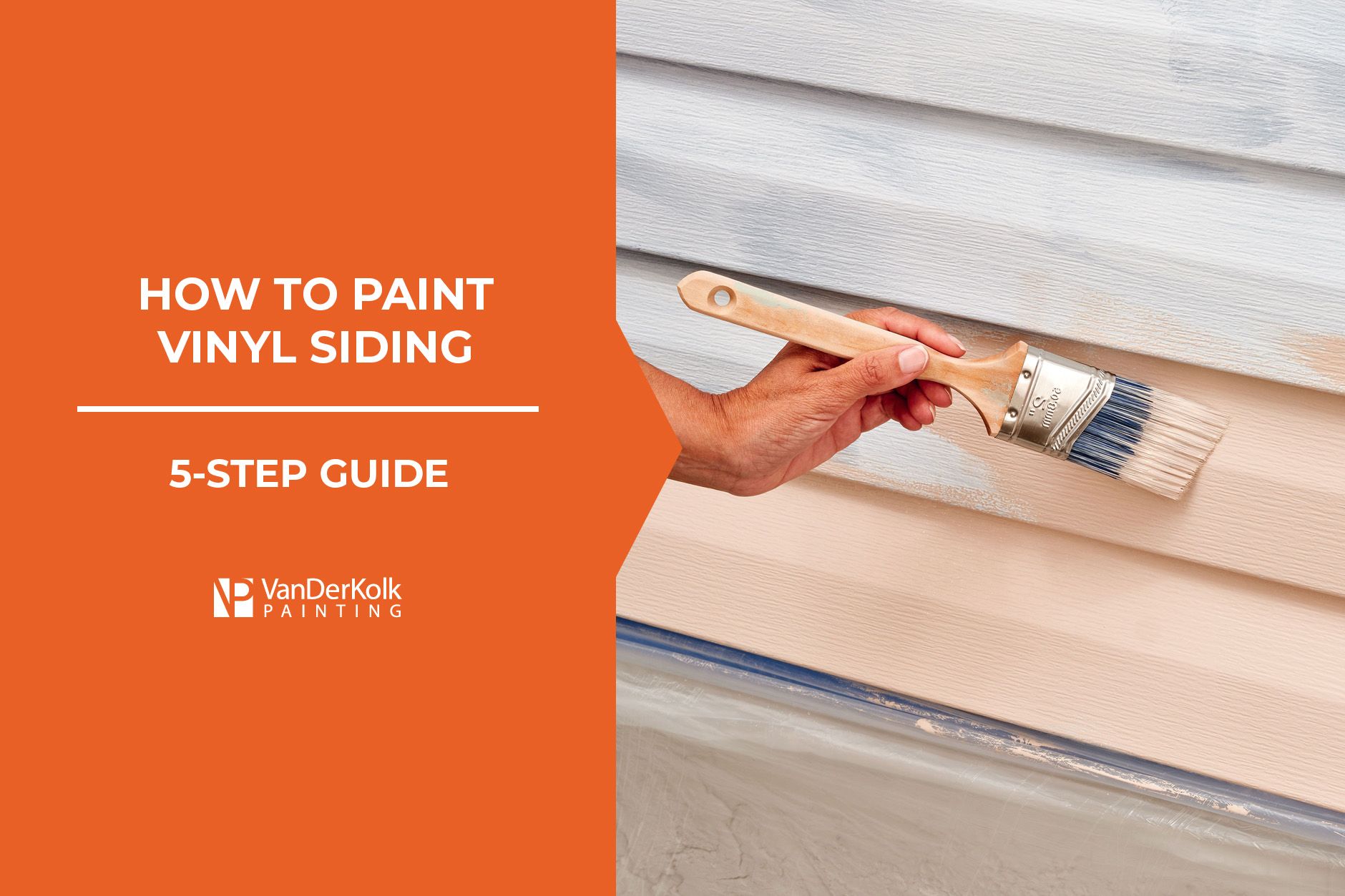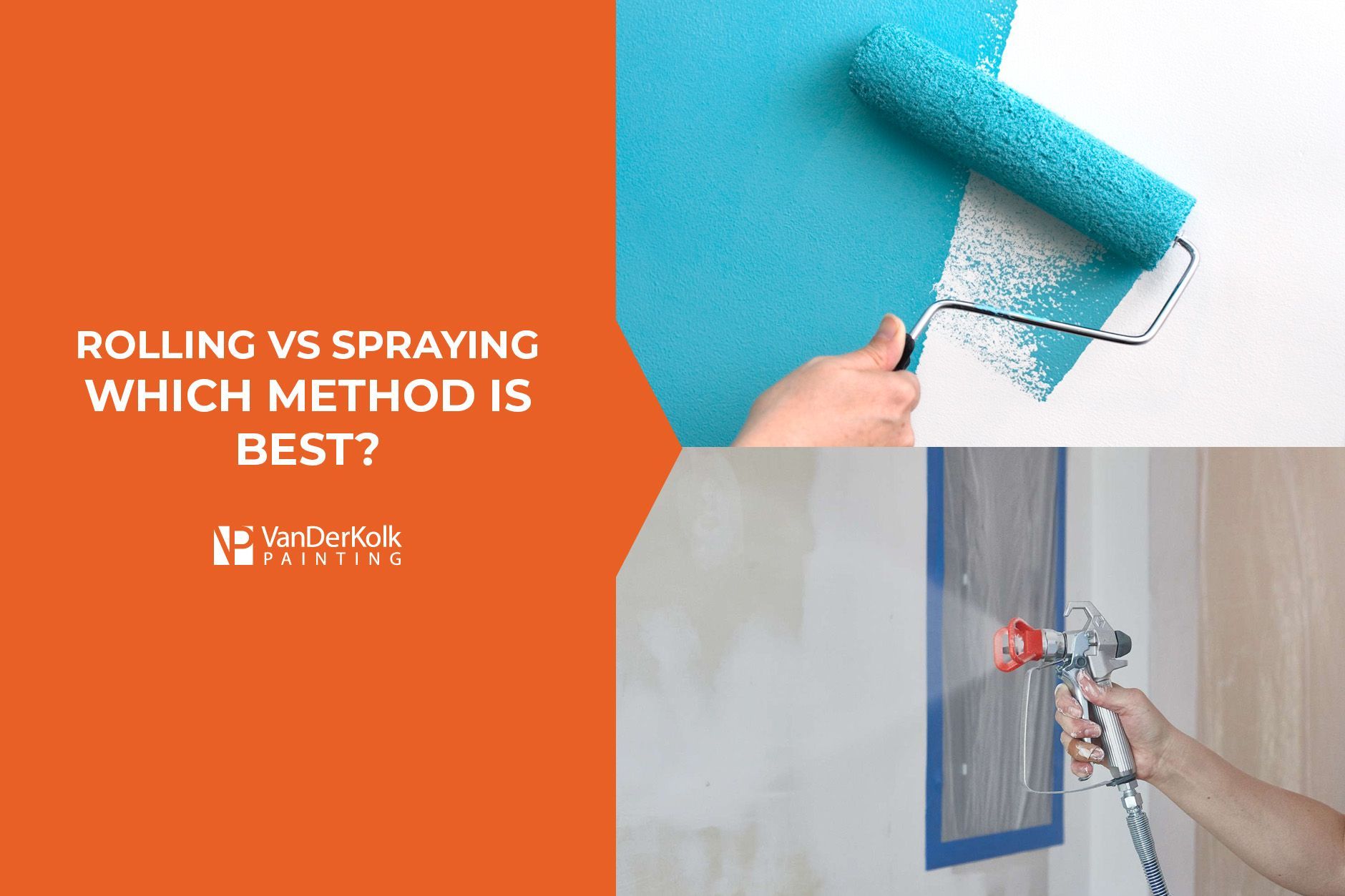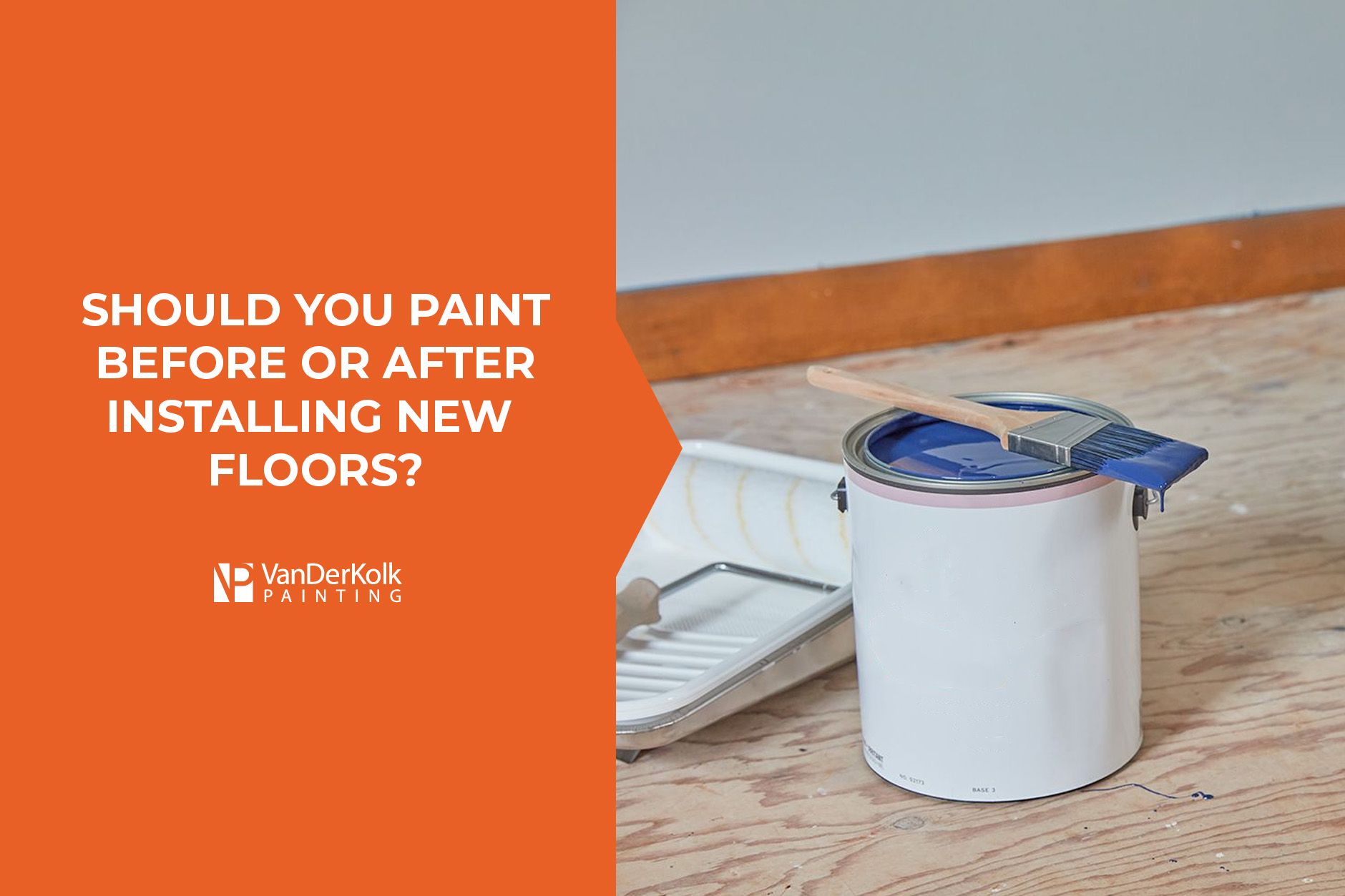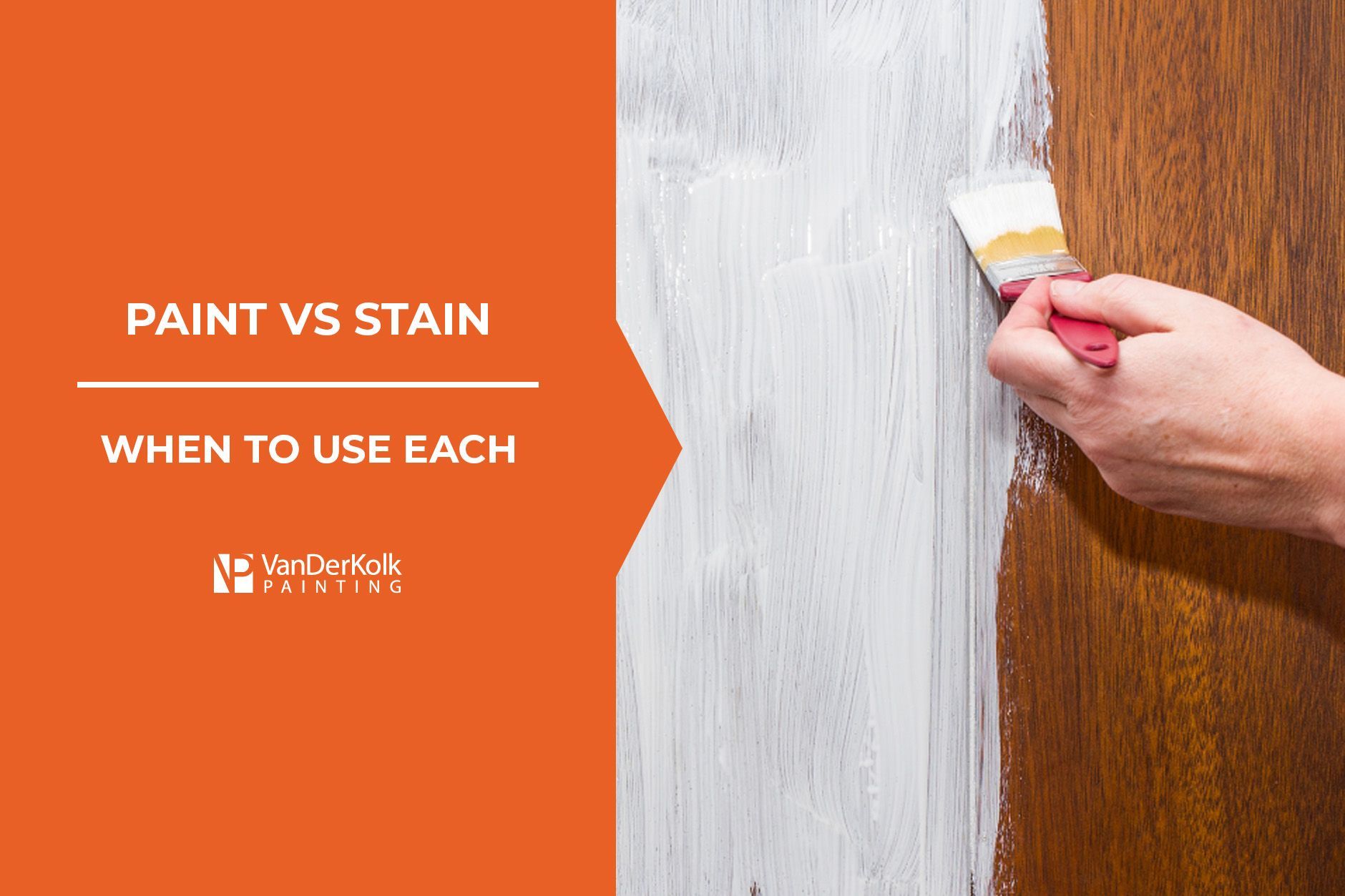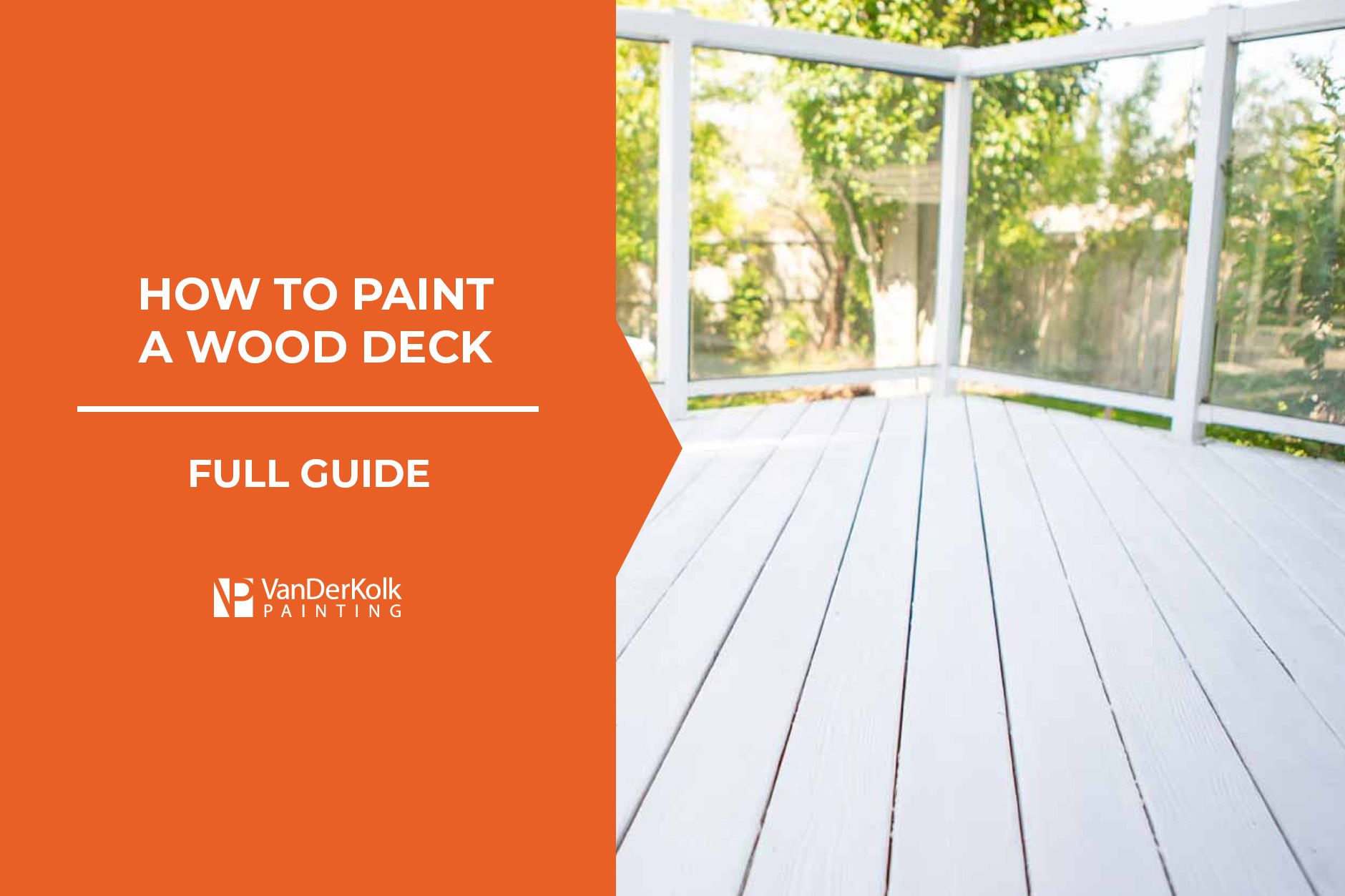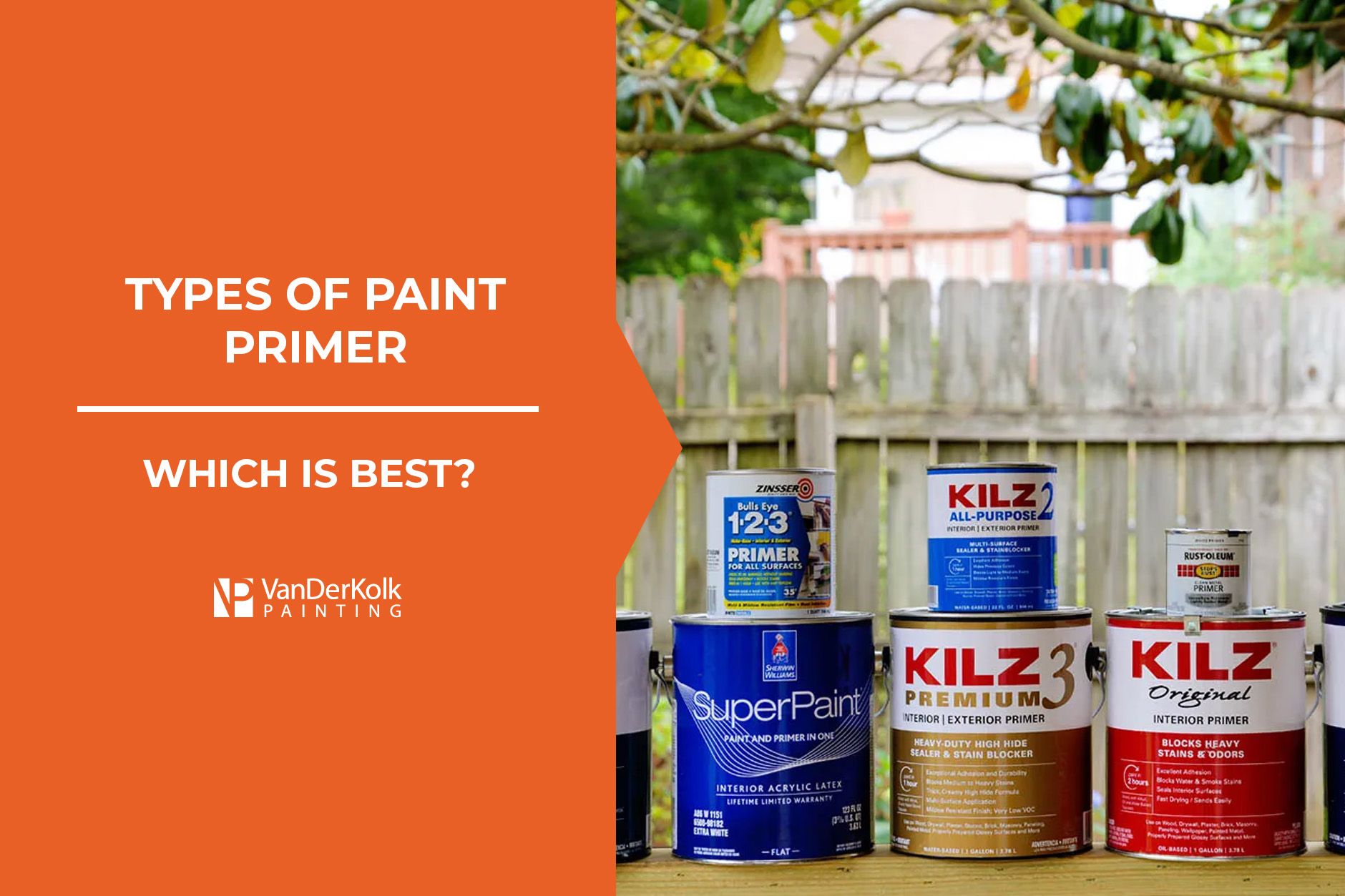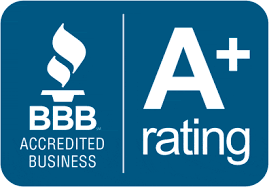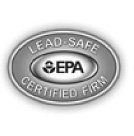By Thomas VanDerKolk
•
September 23, 2025
Taking on a big paint job? You’ve probably wondered, Should I roll or spray the paint? Whether you’re planning a DIY weekend or hiring professionals like VanDerKolk Painting , knowing the difference between rolling vs. spraying paint methods is key to getting the best results. In this guide, we’ll break down the pros and cons of rolling vs. spraying paint, when to use each, and how to get a professional-quality finish every time. Rolling vs. Spraying Paint: What’s the Difference? The two most common ways to apply paint, especially for larger projects, are rolling and spraying. Choosing the right one depends on your surface type, project size, and desired finish. Here’s how each method works and when to use it. What is Paint Rolling? Rolling involves using a foam roller (often with an extension pole) to apply paint in smooth, even strokes. It’s great for tight spaces, detailed areas, and rough or porous surfaces like wood siding or stucco, where the roller helps press paint into the texture. While rolling is a bit more hands-on and time-consuming than spraying, it requires less masking and prep work. For DIYers, it’s often more manageable and less intimidating than setting up a sprayer (and most cost-effective!). What is Paint Spraying? Spraying uses a paint sprayer (usually airless or HVLP) to apply a fine mist of paint across the surface. It’s fast and produces a smooth, professional finish on large or textured areas like siding , fences , or garages . That said, spraying does require more prep work. Because paint is misted, nearly all surfaces need to be thoroughly masked off to prevent overspray. If painting an exterior surface, the weather also plays a significant role in paint spraying, as the wind can blow the paint away from the surface. Pros and Cons of Rolling Paint While rolling paint is often a manageable method to paint interior and exterior surfaces, there are some benefits and disadvantages to consider. Benefits of Rolling Paint Rolling may not be the flashiest method, but it’s a tried-and-true technique that offers several practical benefits, especially when precision and control matter. Here’s why rolling is often the right choice: Better Paint Penetration on Porous Surfaces - Rolling presses the paint into rougher materials like wood siding, stucco, or fiber cement, helping it adhere better and last longer. This is especially important in climates like Michigan’s, where durability matters. More Control - Rolling gives you ultimate control over where the paint goes. That means less risk of getting paint on windows, trim, or nearby fixtures, making it a great option for homes with a lot of detail. Ideal for Detailed or Small Areas - Rolling works well in tight spaces or around architectural features where precision is important. It’s also easier to cut in around edges without having to mask everything off. Easier for DIYers - If you’re taking on a painting project yourself, rolling is generally more manageable. You won’t need expensive equipment, and there’s a lower learning curve compared to spraying. Minimal Equipment Setup - Aside from a roller, tray, and extension pole, rolling doesn’t require much gear to get the job done. Drawbacks of Rolling Paint Of course, rolling may be easy, but it isn’t perfect. Depending on the paint project and the type of surface, it can have some limitations and disadvantages. Slower Application on Large Surfaces - Rolling a full exterior, especially on a multi-story or large home, takes time and a good amount of physical energy. Can Leave Texture or “Roller Marks” - If not done correctly, rolling can leave visible lines or patterns in the paint finish. The type of roller nap and your technique both play a role here. More Physical Effort Required - Rolling is quite labor-intensive, especially when you’re working overhead or climbing ladders for extended periods. Less Efficient on Highly Textured Surfaces - While rolling can press paint into rough textures, it may require more effort and multiple passes to fully cover deeply grooved or uneven materials like rough stucco or aged wood. Pros and Cons of Paint Spraying When using the spraying method to paint, you’ll likely get a more professional-looking finish, but only if you have the right equipment and technique. Benefits of Paint Spraying Paint spraying offers speed, efficiency, and a high-end finish when used in the right setting. It’s useful for large projects or surfaces that are hard to reach or highly detailed. Fast, Even Coverage on Large Surfaces - Spraying is significantly faster than rolling when you’re covering large, uninterrupted surfaces, like home exteriors, ceilings, or open interior walls. It applies paint in a smooth, uniform layer without the stop-and-start motion of rolling. Flawless, Professional Finish - A paint sprayer delivers a fine mist of paint that lays down evenly, leaving no marks or strokes. This makes it ideal for projects where a smooth, factory-like finish is desired, such as on cabinets, doors, trim, or smooth walls. Better for Textured or Detailed Surfaces - Sprayers can reach into grooves, cracks, and uneven textures much more easily than a roller brush. Whether it’s stucco siding, decorative crown molding, or an ornate fence, spraying ensures complete coverage with less effort. Efficient for New Construction or Remodels - In homes that are empty or under renovation, spraying can dramatically cut down on labor time. There’s less need to work around furniture, floors, or fixtures, making spraying a smart choice in wide-open spaces. Ideal for Hard-to-Reach Areas - High ceilings, stairwells, exterior siding, and second-story walls can be coated quickly without constant repositioning or extensive ladder work. Drawbacks of Spraying Paint While spraying can offer a high-end finish and faster results, it is not always the best fit. Extensive Prep Work Required - Spraying creates a fine mist of paint that can settle on anything nearby. That means more masking and taping—covering floors, windows, furniture, light fixtures, trim, landscaping, and more. Prep time can sometimes take longer than the painting itself. High Risk of Overspray - If not done carefully, paint can travel where it shouldn’t. Spraying in windy conditions can make this worse, especially on exterior jobs. Not Ideal for Small or Cluttered Spaces - In rooms that are fully furnished or tight on space, spraying becomes less practical. The time it takes to prep and protect everything may outweigh the benefits of speed. Requires Skill and Proper Technique - Getting a clean, even finish with a sprayer isn’t as simple as pressing the trigger. Uneven passes, over-application, or poor technique can lead to drips, streaks, or patchy coverage. Equipment Investment and Maintenance - Paint sprayers can be expensive to purchase or rent. They also require thorough cleaning after use. They also tend to use more paint than rolling, increasing costs even more. When to Use Rolling vs. Spraying Paint Both rolling and spraying have their place in painting projects. The best method often depends on the type of surface, the project's size, and whether the space is occupied or unoccupied. When Rolling Is Best Rolling is best for interior spaces that are already furnished and lived in, where masking everything off would be time-consuming or impractical. It’s also a great option for detailed work, such as painting around windows, trim, and corners. On exterior jobs, rolling works well on rough or porous surfaces, like wood or stucco. It’s also better suited for smaller projects, touch-ups, or repaints where only part of the surface needs attention. When Spraying Is Best Spraying is the right method for large, open areas. This could be an entire house exterior, an open-concept interior, or a long stretch of fencing. It’s also the preferred approach when you’re looking for a smooth, flawless finish, such as on cabinets , doors, or new drywall. It is a preferred method for new construction , where there’s minimal furniture or landscaping to protect, and the job needs to be done quickly. It’s also highly efficient for textured surfaces like stucco or brick. Rolling vs. Spraying Paint: What to Consider Before Choosing Deciding between rolling and spraying isn’t just about preference. Here are some things to consider before choosing the best method for your painting project. Surface Type Different surfaces take paint differently. Textured surfaces like stucco, brick, and rough wood may benefit more from spraying, which reaches into cracks and crevices. Smooth or porous surfaces, like drywall or wood siding, may get better adhesion with rolling, which presses the paint into the surface. Project Size For large, uninterrupted surfaces, spraying can significantly reduce the amount of time needed to paint. But for smaller projects or detailed areas, rolling gives you the control you need without spending hours masking and prepping. Indoor vs. Outdoor Projects Spraying outdoors is efficient, but weather conditions like wind and humidity can complicate things . Indoors, rolling may be the smarter choice in furnished spaces, where protecting surrounding surfaces from overspray is more challenging. Related Blog: Average Cost of Exterior Painting Prep Time and Clean Up Spraying usually requires much more prop and masking, especially indoors. Rolling, while slower during application, often saves time overall with less setup and cleanup, especially for homeowners tackling the job themselves. Safety Considerations When Rolling or Spraying Paint Whether you’re rolling or spraying, safety should always come first. Painting exteriors often involves working from ladders or scaffolding, which increases the risk of falls or injury if not done properly. Indoors, spraying in enclosed spaces without proper ventilation can expose you to harmful fumes that could affect your respiratory system, nervous system, and organs, especially if you are not using low-VOC paint. Sprayers also require protective gear like goggles, respirators, and coveralls to guard against overspray and fine paint mist. Even rolling can present hazards if you’re stretching, reaching, or working overhead for long periods without breaks. If you’re unsure about the safest way to tackle your project, it may be a sign to bring in a pro. At VanDerKolk Painting, we take every precaution to ensure our work is done safely, cleanly, and up to industry standards—so you don’t have to take the risk. DIY vs. Professional Painting: What’s Right for You? Painting might seem like a DIY-friendly project, but there’s more to it than meets the eye, especially when it comes to choosing between rolling and spraying. Rolling may be manageable for small rooms, but full exterior or large interiors often demand professional skill, equipment, and time. Spraying, especially, requires expertise to avoid streaks, drips, and overspray damage. Hiring a professional ensures the job is done efficiently, safely, and with a finish that lasts. At VanDerKolk Painting , we assess every project and choose the right method, or combination of methods, for your home’s unique needs. Whether you’re repainting a single room or refreshing your home’s entire exterior, our experienced team delivers clean lines, full coverage, and long-term durability. Not Sure Whether to Roll or Spray? We’ll Help You Decide! When looking at the facts, both rolling and spraying paint are excellent options. However, it all depends on your unique project and how much experience in painting you actually have. At VanDerKolk Painting, we’ve been helping Michigan homeowners get beautiful, long-lasting results for over 30 years. We take the time to evaluate your home, your surfaces, and your goals before recommending the right approach. Sometimes that’s rolling, sometimes spraying, and often it’s a combination of both. Either way, you can count on a clean, professional finish that holds up to Michigan’s seasons. Request your free, no-pressure estimate today by calling 616-202-6570 or filling out our online contact form . Paint Rolling & Spraying FAQs Is it better to spray or roll on a house? It depends on the surface, project size, and your goals. Spraying is faster and gives a smooth finish, while rolling offers better control and better coverage on porous surfaces. For many exterior jobs, a combination of both is often best. What lasts longer: rolled paint or sprayed paint? Neither method guarantees a longer-lasting result on its own. Durability comes down to surface prep, paint quality, and proper application. Check out our blog about how long exterior paint lasts for more info! Can I spray paint inside my house? Yes, but it requires careful masking, proper ventilation, and protective equipment. Spraying indoors is best suited for new construction and empty rooms. In occupied spaces, rolling is usually more practical and safer. Is spraying paint worth it for DIY projects? It can be, but only if you’re experienced and have the right equipment. Sprayers save time on large surfaces but involve more prep, clean-up, and risk of overspray. For most DIY projects, rolling is the safer, more manageable choice. Do professional painters spray or roll? Both! At VanDerKolk Painting, we assess each project and choose the method—or combination—that gives the best finish and long-term results. Our team is skilled in both techniques and uses the one that fits your home and goals best.
